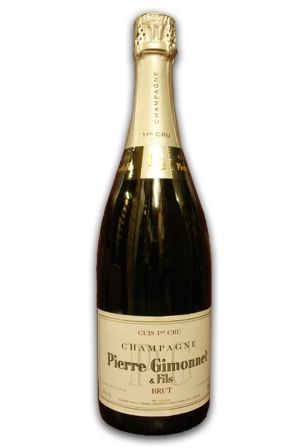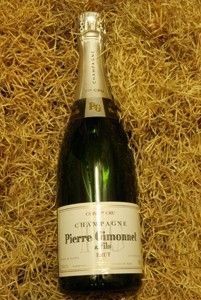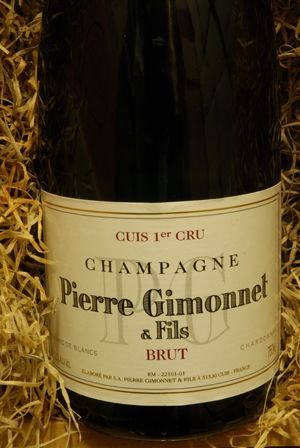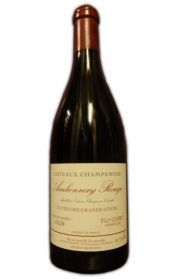Champagne Gimonnet Champagne Brut Premier Brut
Champagnes Prix pour 6 Bouteilles

Pale gold with a frothy mousse. Highly aromatic bouquet of tangerine, pear, minerals, sweet butter and lees ; smells like a Puligny-Montrachet. Fine, focused and pure, offering spicy citrus and orchard fruit flavors and a strong mineral bite. The minerality gains strength on the finish, which is spicy and strikingly energetic.


Stephen Tanzer : 92 points
Wine Spectator : 90 points
Champagne Brut
- Area : Other areas
- Name : Brut
- Grape variety : Chardonnay
- Structure : Finesse, Freshness, Satiny, Velvety
- Families of flavor : Citrus fruits, Exotic fruits, Flowers
- Conservation : A boire jusqu'en 2015
- Temperature of service : 8-10°
- Mets/wines agreements : Carpaccio de Saint-Jacques, Foie gras poêlé, Tapas de figues et foie gras





Description of the Champagne Gimonnet
Pale gold with a frothy mousse. Highly aromatic bouquet of tangerine, pear, minerals, sweet butter and lees ; smells like a Puligny-Montrachet. Fine, focused and pure, offering spicy citrus and orchard fruit flavors and a strong mineral bite. The minerality gains strength on the finish, which is spicy and strikingly energetic.
Wine Spectator : 90 points
"Brisk and compact, exhibiting apple, floral and lemon notes on a lean profile. Nicely balanced and crisp on the finish. Drink now through 2010." (2009)
Stephen Tanzer’s : 92 points
"Pale gold with a frothy mousse. Highly aromatic bouquet of tangerine, pear, minerals, sweet butter and lees ; smells like a Puligny-Montrachet. Fine, focused and pure, offering spicy citrus and orchard fruit flavors and a strong mineral bite. The minerality gains strength on the finish, which is spicy and strikingly energetic. This pure, graceful Champagne would be perfect with oysters. All of Gimonnet’s wines go through malolactic fermentation." (2009)
Bettane & Desseauve, Grand guide des vins de France 2010 : 15/20
Guide Hachette 2010 :
Les meilleurs vins de France 2010 : 14,5/20
GaultMillau 2010 : 15,5/20
David Cobbold : 15/20











